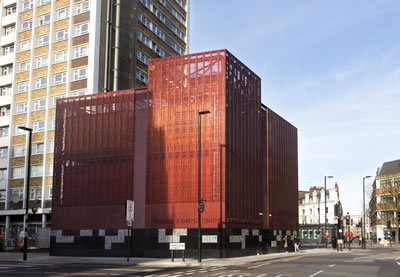Heat networks have been used in many parts of the World {including the UK - The Pimlico District Heating Undertaking opened in the 1950's as the UK's first true district heat network. This pioneering system connected 1,600 council homes to the waste heat generated by Battersea Power Station. The network survives under Westminster City Council today, serving 3,256 homes, 50 business premises and three schools.} to deliver "waste heat" {typically from the generation of electricty} to homes and businesses. We see them as Combined Heat and Power systems {CHP} and imn the UK at the moment there is 862MWe being generated with the correspondent Heat Network {theoretically at 1600MW}
Coming to a city near you
 Meanwhile in North London, the Bunhill CHP installation has now incorporated waste heat expelled from London's Tube Train network - Bunhill 2.
Meanwhile in North London, the Bunhill CHP installation has now incorporated waste heat expelled from London's Tube Train network - Bunhill 2.
In 5th generation networks, decentralised heat pumps draw heat from an ambient loop, meaning that excess heat can be removed and redirected to provide heat elsewhere. In this way, the system can provide both heating and cooling.
Another development in heating technology being tested is the ‘Internet of heat’. This is the idea that users could both buy and sell heat and energy, allowing consumers to become producers too. This could one day lead to local energy and heat markets, with distributed, decentralised micro-generation that would lower energy bills, increase efficiency.
Such schemes are key to overcoming the risks associated with establishing new heat networks, which currently acts as a barrier to realising their potential to deliver heat to homes. Retrofitting properties currently supplied by gas, in particular, is expensive. However in a 'new build' scenario, a Heat Network should be standard to maximise energy efficiency and thus minimise costs to the consumer.
